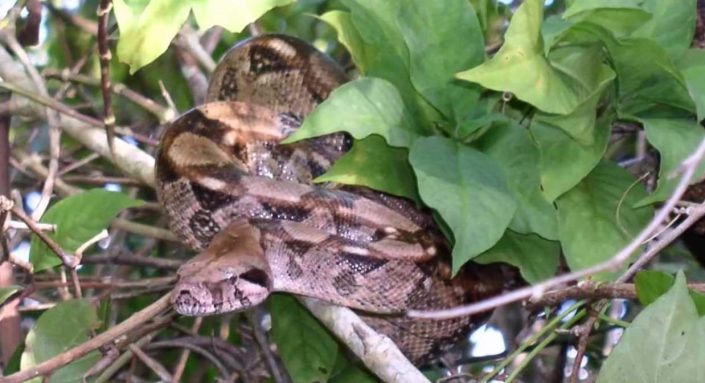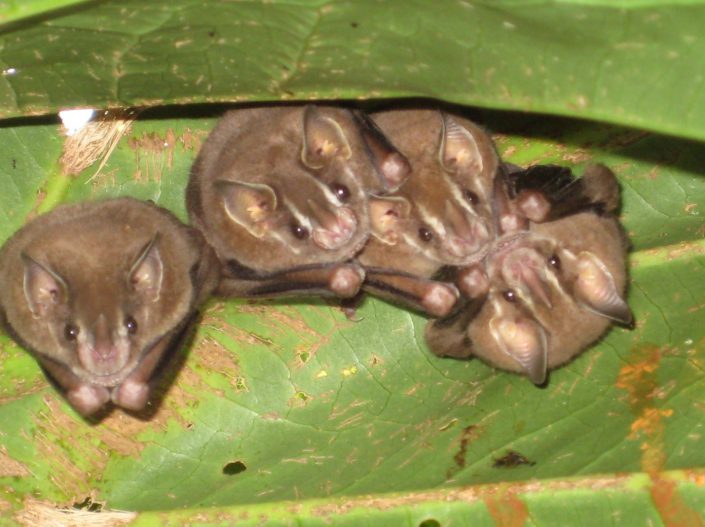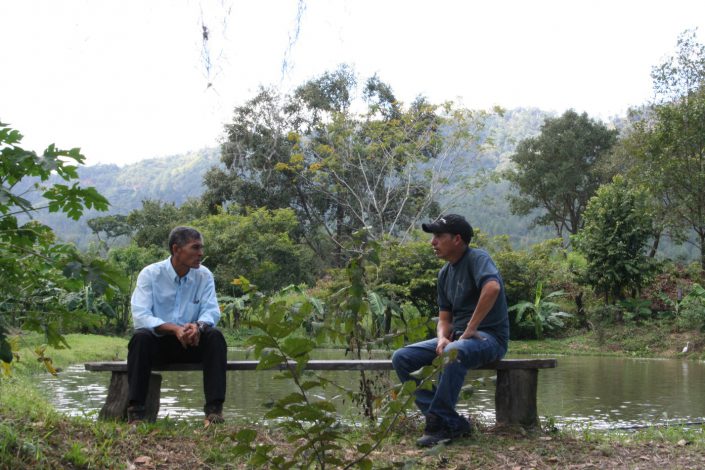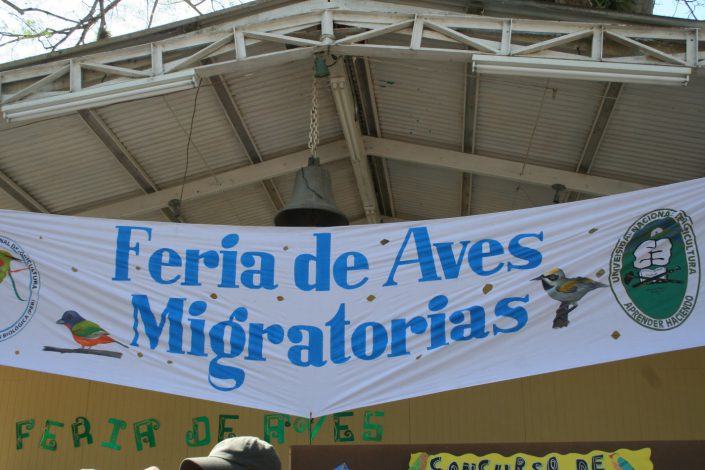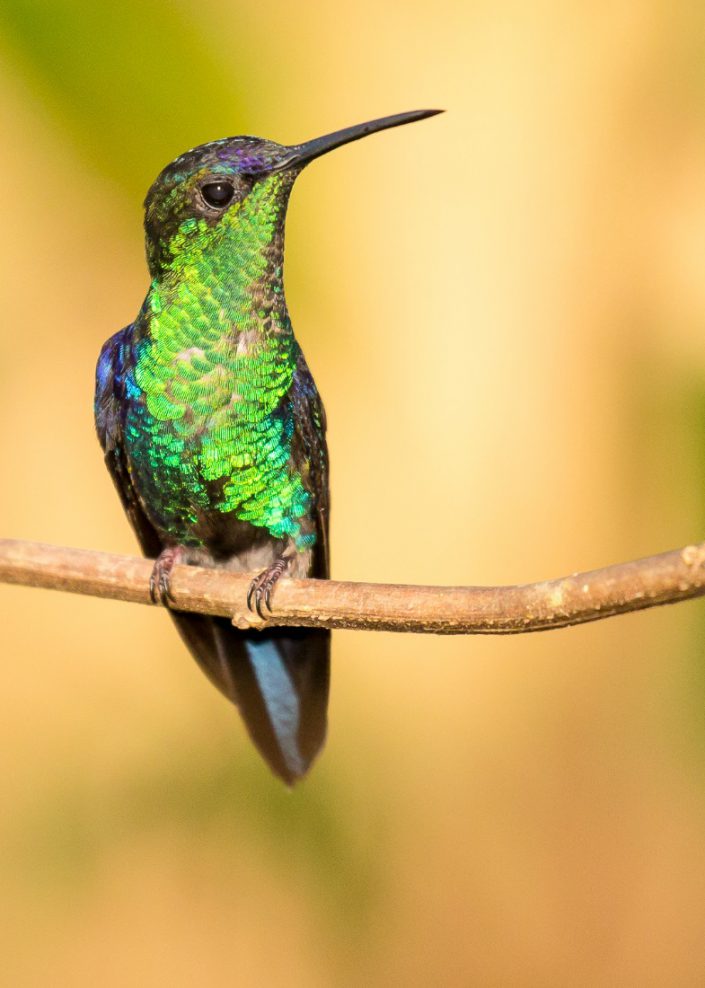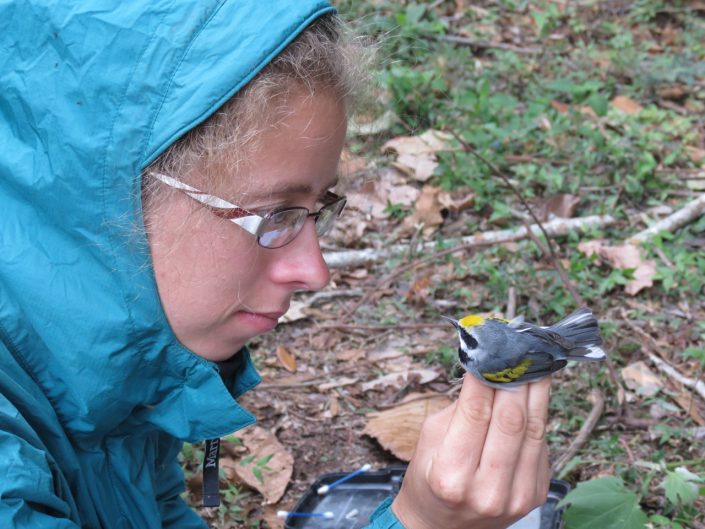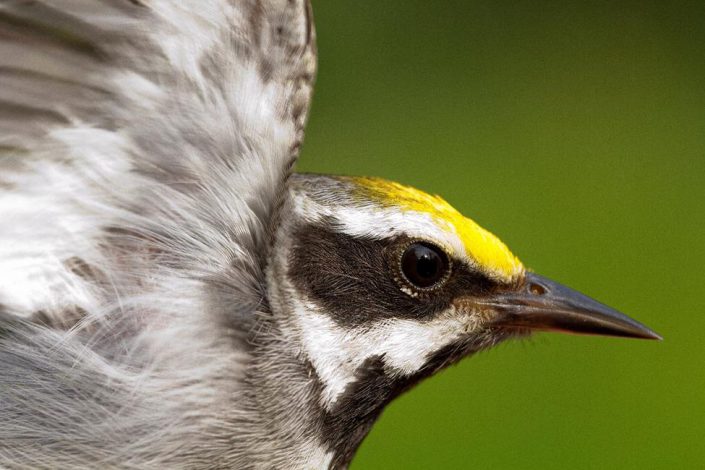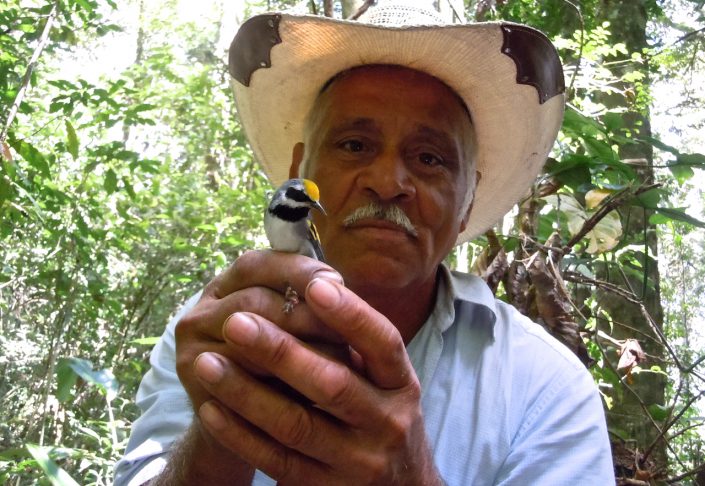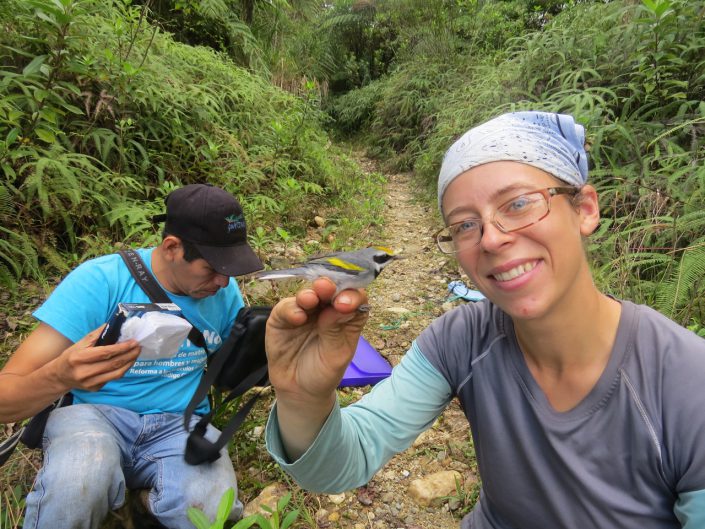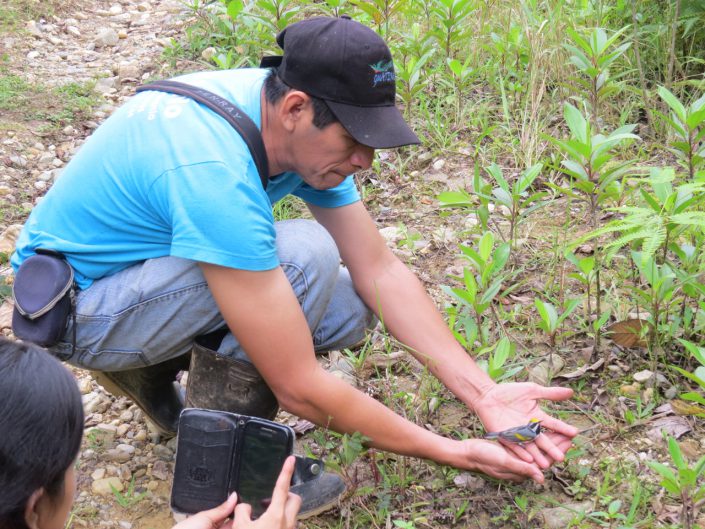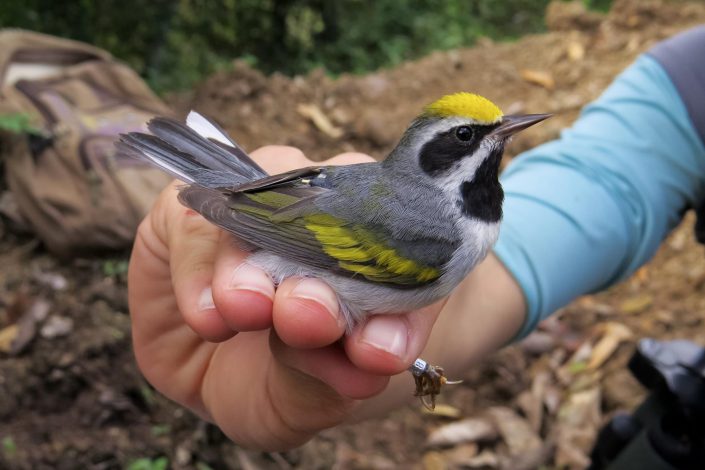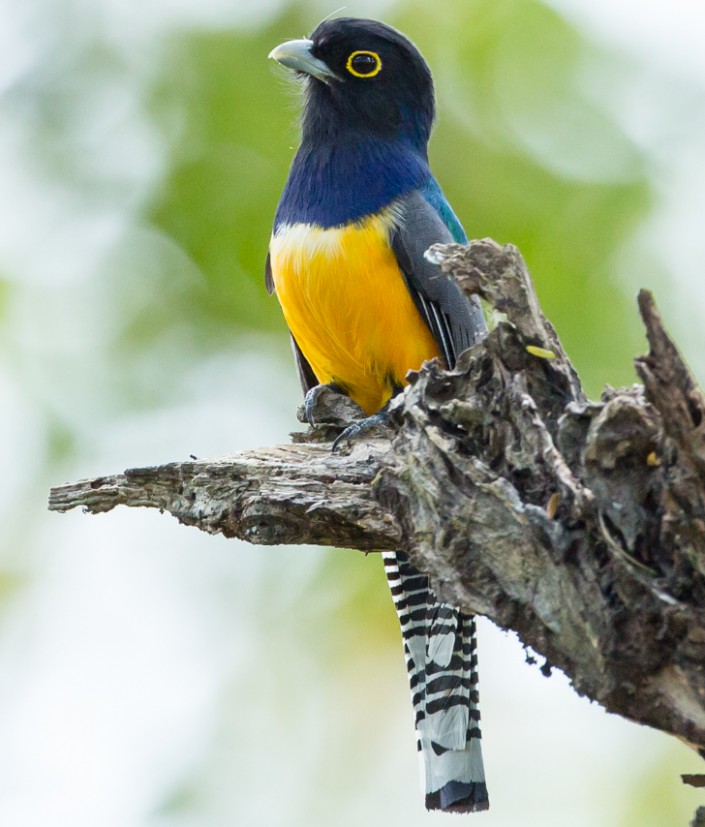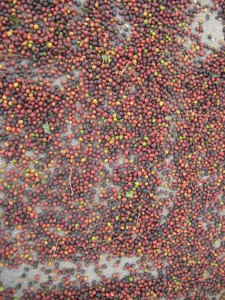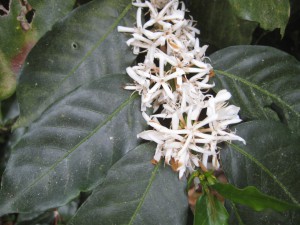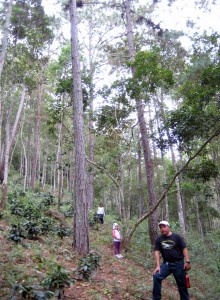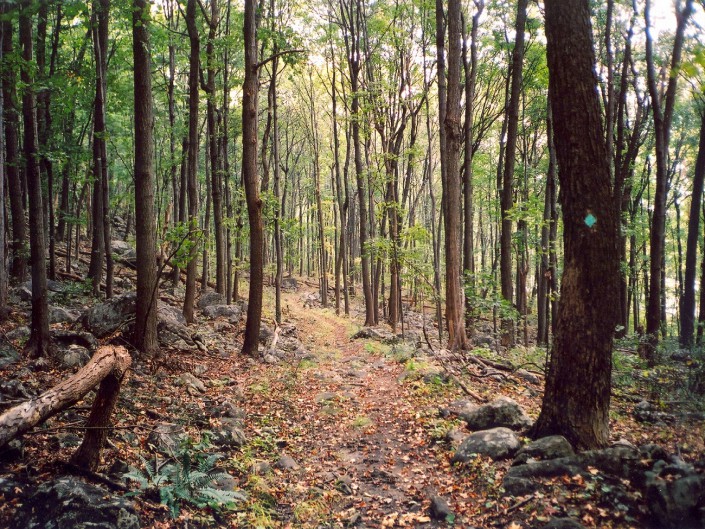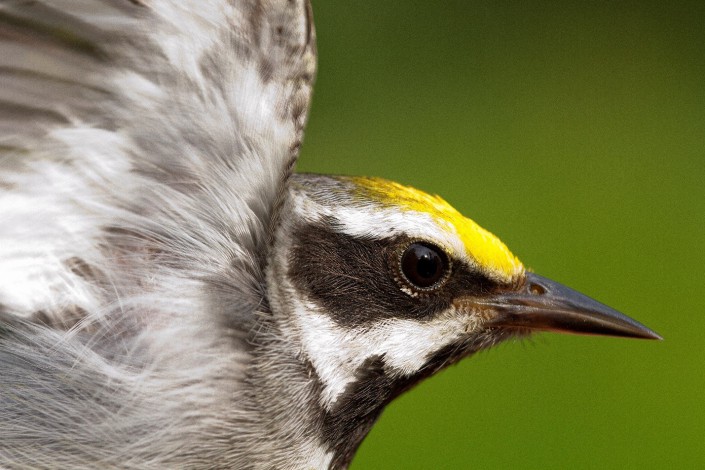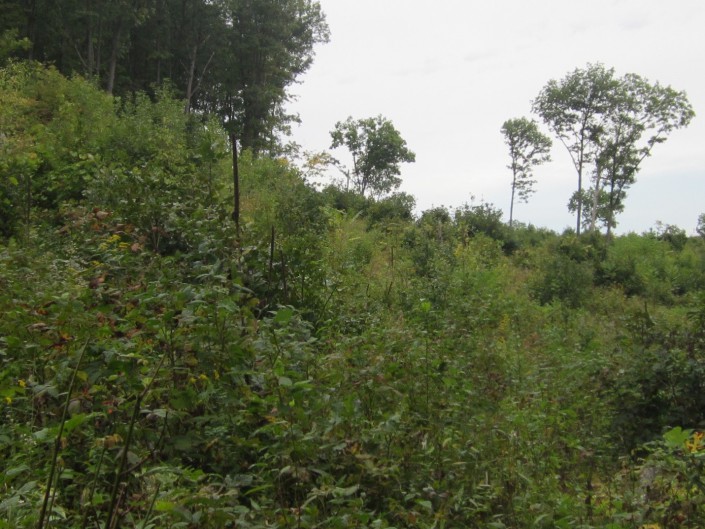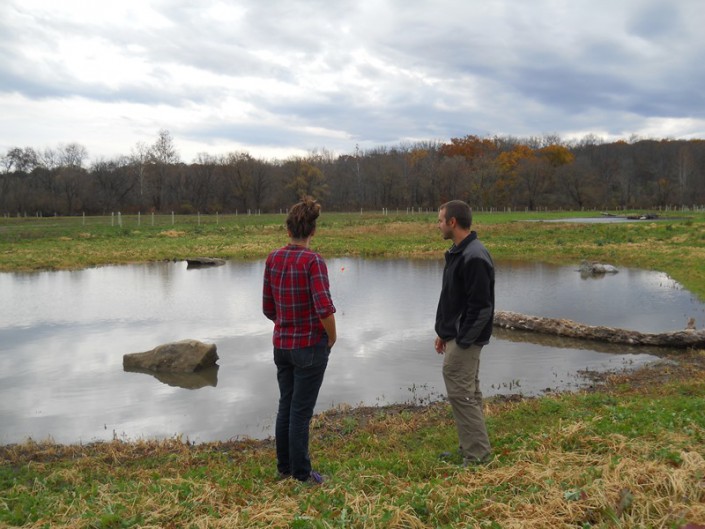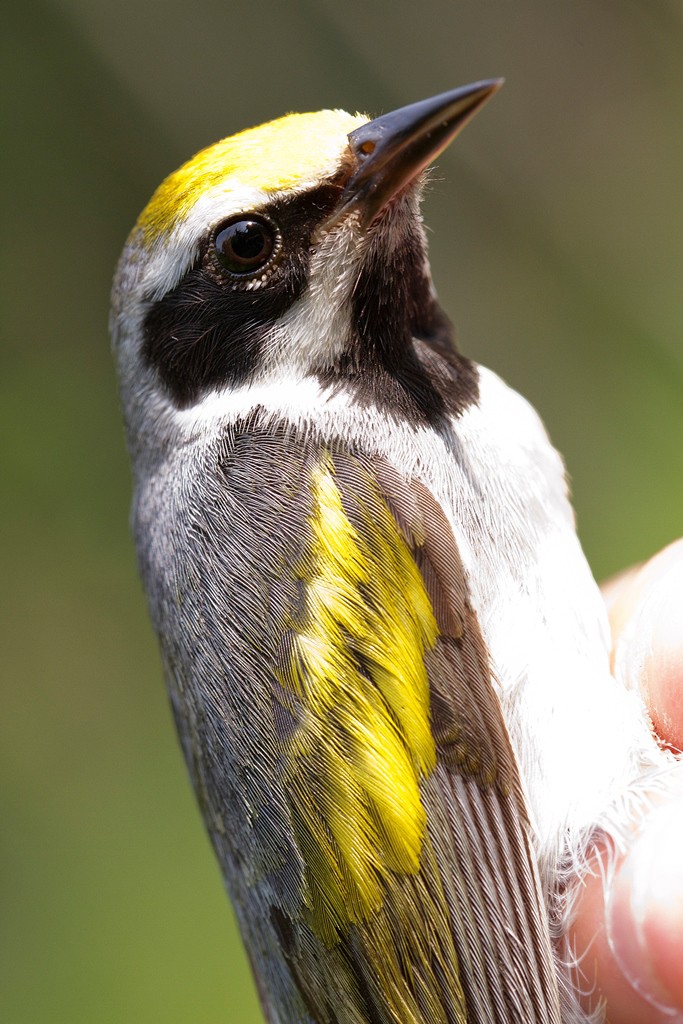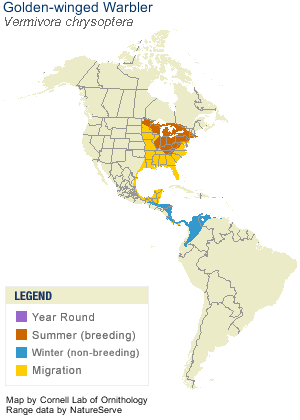Netting for Golden-winged Warblers in New Jersey
GETTING A CLOSE-UP LOOK AT A BEAUTIFUL BUT ENDANGERED SONGBIRD
by Kathleen Wadiak, CWF Intern
Interning for CWF allows me to take part in a variety of projects and learn from different professionals working throughout the state. One example of this is the morning I was able to learn about golden-winged warblers through a mist netting survey. Honestly, I did not know much about this little bird until we were driving to a power line right-of-way early one morning, and I was given a quick summary of why it’s causing a stir in our home state.
The golden-winged warbler (Vermivora chrysoptera) is a striking little gray bird with black eye and throat markings, sporting a bright yellow head with matching wing patches. New Jersey serves as part of its breeding grounds throughout the summer, when it migrates north from its winter habitat in Central and South America. Unfortunately, its populations have been in decline, resulting in its classification as a state endangered species.
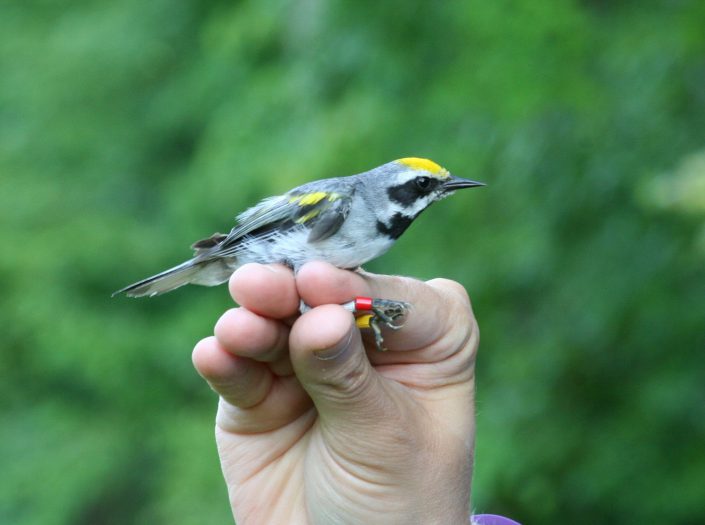
There are a few possible reasons for the decline in golden-winged warbler populations, including a decrease in their habitat, early-successional sites which consist of shrubby and herbaceous ground cover instead of mature forest. To the golden-winged warbler’s disadvantage, much of its New Jersey forest was cut at the same time, resulting in even-aged stands that are now too old to provide the nesting sites necessary for survival. Currently, golden-winged warblers occupy regenerating clear cuts, wetlands, or utility right-of-ways in northwestern New Jersey, where they can still find the resources that they need.
In addition to habitat loss, interactions with the closely related blue-winged warbler (Vermivora cyanoptera) are impacting the golden-wings’ numbers. It is thought that as climate change causes shifts in the geographic range of both species, more overlap between the two occurs. This results in increased competition for food, nesting sites, and even mates, as the two birds are closely related.
Walking through the high grass under the powerlines, we stopped now and then to listen to birds singing and look for golden-wings. While my untrained ears had trouble differentiating between all of the different calls, a biologist with NJ Audubon confidently told us where to begin setting up each net. After the net was raised, different recordings meant to attract the warblers played while we stepped back and waited hopefully for the right birds to come.
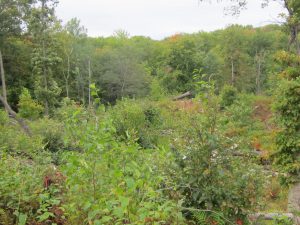
It was exciting to see the first birds fly into the net and to have the opportunity to view them up close, even if they weren’t always the ones we were looking for. While we set up three nets throughout the morning, our first attempt was most successful as it resulted in the capture of one of the rare golden-winged warblers! Its banded leg told us that this wasn’t its first time in a net, and that it had been to this site in the past, a good sign for this particular stretch of habitat. Its dramatic markings and flashes of gold feathers made it a beautiful bird, and it struck me what a shame it would be if they disappeared completely from our state.
While things are tough for golden-winged warblers in New Jersey, hope is not lost as many organizations, including CWF, the Natural Resources Conservation Service, NJ Audubon, and NJ Division of Fish and Wildlife are working to keep these birds in the Garden State. Mist netting and banding the Golden-wings allow biologists to track the number and location of these warblers throughout their breeding grounds and aid in the creation of management strategy. In addition, there is an effort to educate private landowners about golden-wings and to help them manage their property in a way that attracts the birds. Hopefully, as this work continues, more land will be suited to their habitat preferences, and golden-winged warblers will return to their summer homes in New Jersey.
LEARN MORE

